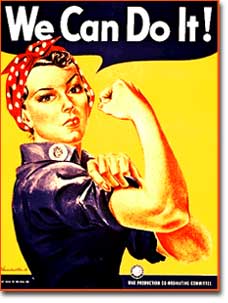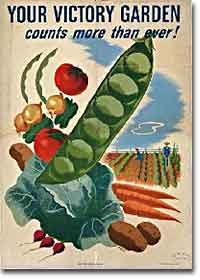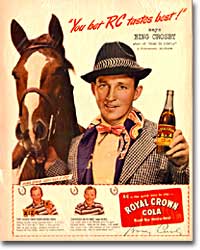51b. The American Homefront

"Rosie the Riveter" served as both a symbol of women's contributions to the war effort as well as a call to others to join.
America was the largest military power in the world — in theory.
The large population, generous natural resources, advanced infrastructure, and solid capital base were all just potential. Centralization and mobilization were necessary to jump-start this unwieldy machine. Within a week of Pearl Harbor, Congress passed the War Powers Act, granting wide authority to the President to conduct the war effort. Throughout the war hundreds more alphabet agencies were created to manage the American homefront.
First the United States needed to enlarge its armed forces. Because of the peacetime draft, the United States Armed Forces boasted over 1.5 million members. By the end of the war, that number rose to 12 million. A more expansive draft and a vigorous recruitment campaign produced these results. Prodded by Eleanor Roosevelt, FDR created women's auxiliary forces for the army (WACs), navy (WAVES), air force (WASPS), and Coast Guard (SPARS). The colossal ranks of the armed services created a huge labor shortage.
Toward this end a "Work or Fight" propaganda campaign was waged. "Rosie the Riveter" posters beckoned housewives to leave the home and enter the nation's factories. About 6.5 million females entered the workforce during the war years, many for the first time. African Americans continued the Great Migration northward, filling vacated factory jobs. Mexican Americans were courted to cross the border to assist with the harvest season in the bracero guest-worker program. Thousands of retirees went back on the job, and more and more teenagers pitched in to fill the demand for new labor.

Posters like this encouraged Americans to conserve energy and resources by producing their own food.
The United States government spent over twice as much money fighting World War II as it had spent on all previous programs since its creation. Tax rates were raised to generate revenue and control inflation. Some people paid 90% of what they earned toward taxes!
Still, more money was needed so the government again launched Liberty and Victory Loan Drives like those that helped finance the First World War. In addition, the size of the federal government more than tripled from about a million workers in 1940 to almost 3.5 million in 1945.
The United States managed to raise enough food and raw materials in the First World War through voluntary measures. This time, federal officials agreed that only through rationing could the demands be met. Americans were issued books of stamps for key items such as gasoline, sugar, meat, butter, canned foods, fuel oil, shoes, and rubber. No purchase of these commodities was legal without a stamp. Victory speed limits attempted to conserve fuel by requiring Americans to drive more slowly. Rotating blackouts conserved fuel to be shipped overseas. Groups such as the Boy Scouts led scrap metal drives. Consumer goods like automobiles and refrigerators simply were not produced. Women drew lines down the backs of their legs to simulate nylon stockings when there were such shortages. Backyard gardens produced about 8 million tons of food.

Crooners like Bing Crosby kept America smiling during the war with hits like "Goodbye Mama, I'm Off to Yokohama."
Additionally, the Office of War Information sponsored posters and rallies to appeal to patriotic heartstrings. Songs like Bing Crosby's "Junk Will Win the War" and "Goodbye Mama, I'm Off to Yokohama" were on the lips of many Americans. Propaganda movies shot by famed directors such as Frank Capra inspired millions.
The accomplishments of the American public were nothing short of miraculous. The navy had fewer than 5,000 vessels prior to the bombing at Pearl Harbor. By 1945, they had over 90,000. In addition, over 80,000 tanks and nearly 300,000 aircraft were produced during the war years. Millions of machine guns and rifles and billions of ammunition cartridges rolled off American production lines. New industries like synthetic rubber flourished, and old ones were rejuvenated.
At tremendous cost to the American taxpayer, the American people vanquished two evils: the Axis Powers and the Great Depression.






